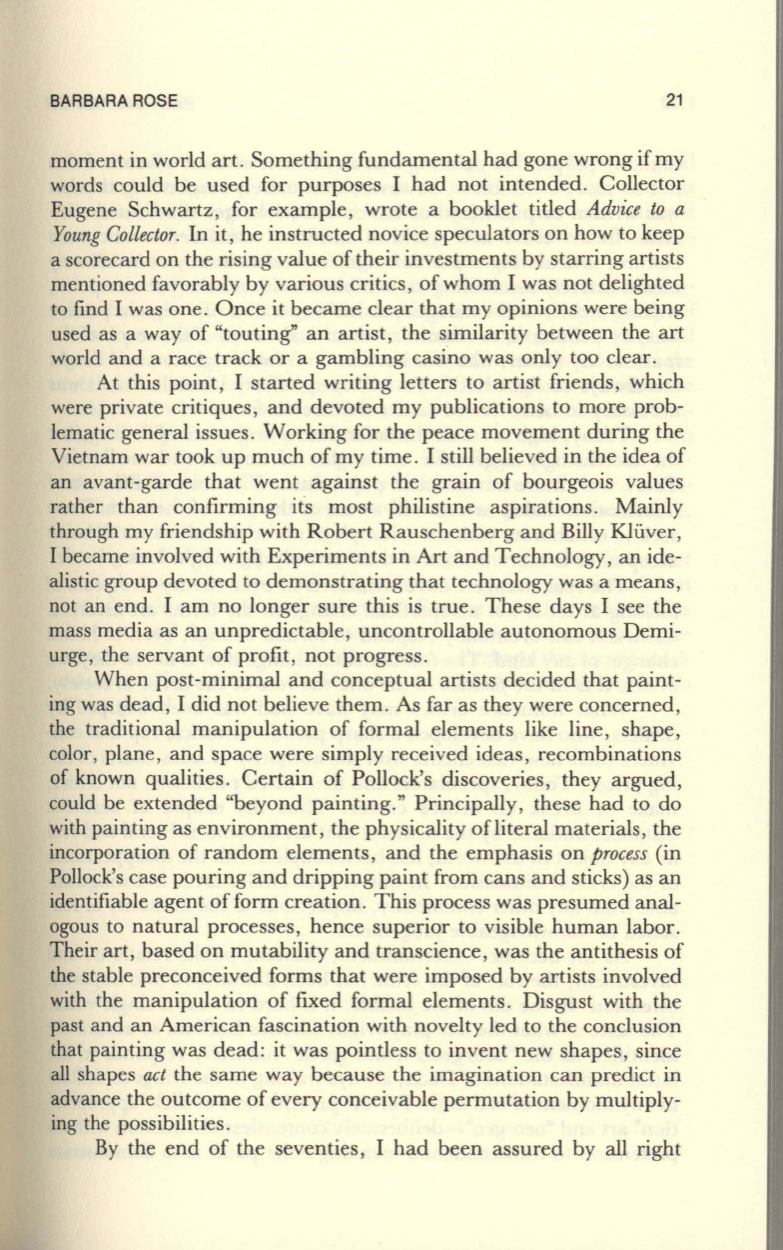
BARBARA ROSE
21
moment in world art. Something fundamental had gone wrong if my
words could be used for purposes I had not intended. Collector
Eugene Schwartz , for example, wrote a booklet titled
Advice to a
Young Collector.
In it, he instructed novice speculators on how to keep
a scorecard on the rising value of their investments by starring artists
mentioned favorably by various critics, of whom I was not delighted
to find I was one. Once it became clear that my opinions were being
used as a way of "touting" an artist, the similarity between the art
world and a race track or a gambling casino was only too clear.
At this point , I started writing letters to artist friends, which
were private critiques, and devoted my publications to more prob–
lematic general issues. Working for the peace movement during the
Vietnam war took up much of my time. I still believed in the idea of
an avant-garde that went against the grain of bourgeois values
rather than confirming its most philistine aspirations . Mainly
through my friendship with Robert Rauschenberg and Billy Kluver,
I became involved with Experiments in Art and Technology, an ide–
alistic group devoted to demonstrating that technology was a means,
not an end. I am no longer sure this is true . These days I see the
mass media as an unpredictable, uncontrollable autonomous Demi–
urge, the servant of profit, not progress.
When post-minimal and conceptual artists decided that paint–
ing was dead, I did not believe them . As far as they were concerned,
the traditional manipulation of formal elements like line, shape,
color, plane, and space were simply received ideas, recombinations
of known qualities. Certain of Pollock's discoveries, they argued,
could be extended "beyond painting. " Principally, these had to do
with painting as environment, the physicality of literal materials , the
incorporation of random elements, and the emphasis on
process
(in
Pollock's case pouring and dripping paint from cans and sticks) as an
identifiable agent ofform creation. This process was presumed anal–
ogous to natural processes, hence superior to visible human labor.
Their art, based on mutability and transcience, was the antithesis of
the stable preconceived forms that were imposed by artists involved
with the manipulation of fixed formal elements. Disgust with the
past and an American fascination with novelty led to the conclusion
that painting was dead: it was pointless to invent new shapes, since
all shapes
act
the same way because the imagination can predict in
advance the outcome of every conceivable permutation by multiply–
ing the possibilities.
By the end of the seventies, I had been assured by all right


